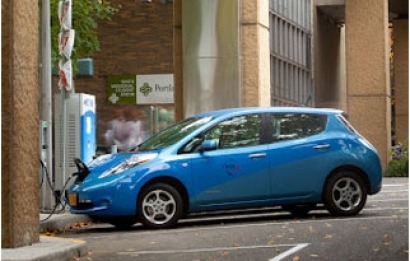
The IEA sees urban programmes as critical for reaching the target of 20 million electric vehicles worldwide by 2020, a goal that can increase energy security and reduce carbon dioxide emissions at the same time. But what works best where? The new IEA-supported publication “EV City Casebook: A Look at the Global Electric Vehicle Movement” has the answers: Besides offering an overview of the status and outlook for EVs, it assesses existing programmes around the world to help mayors, utilities, vehicle manufacturers, urban planners and other stakeholders discover best practices for using EVs in their own cities.
EV City Casebook looks at 16 cities in nine countries on three continents. From Shanghai to Berlin and from Portland, Oregon, to North East England, this free book gives citizens, private sector and governments details about how each pioneering municipality or region developed and operates its system and the milestones it has set for success.
Compiled by several organisations, including the IEA’s Implementing Agreement on Hybrid and Electric Vehicles and the Clean Energy Ministerial’s Electric Vehicles Initiative (EVI), EV City Casebook was launched in conjunction with the World Electric Vehicle Cities and Ecosystems conference in Los Angeles on 5 May, the eve of the four-day Electric Vehicle Symposium and Exposition (EVS-26), also in Los Angeles.
The 16 urban areas include the densely populated, such as New York and Hamburg; the small, like the Goto Islands off Nagasaki; and the vast, like Los Angeles or the Dutch five-city combination of BrabandStad. Their approaches also range broadly, with different cities offering just some or many options. The choices include providing EVs for mass transit or taxis, offering short-rent individual cars, and using technology to create information traffic systems. Many cities lead by example, buying and using EVs for municipal fleets, and some provide special road lanes. Some programs subsidise vehicle purchases directly while others offer incentives for use, like discounted parking or tolls. Many facilitate recharging through financial assistance or stations or both. Many of the infrastructural benefits are made prominent, to encourage use.
"These pioneering cities and regions have managed to capture 30 percent of the early global EV market, and know what’s working so far," said Tali Trigg, Energy Analyst with the IEA. "Whether motivated by job creation, consumer demand, improved mobility, or benefits to air quality and the environment—any city of any size and population mix can begin EV deployment using the lessons learned in the Casebook."
For each of the 16 municipalities, EV City Casebook details specific situations, from land size to average commute to population of people and vehicles as well as highlights of the national and local strategies plus the spending and subsidies involved. Each profile starts with an overview of the current transportation situation and the objectives of the EV programme, including the current fleet and target sizes for future years. The profile concludes with information about how to learn more about the programme and a contact person for the city.
“The relatively short commutes of most urban dwellers make cities the ideal “test beds”, and success in the 16 cities examined in EV City Casebook can lead to greater use of EVs in other locales, moving the world ever closer to clean and sustainable transportation,” finds the study.
Note:
The IEA-supported World EV Cities and Ecosystems web portal is a first of-its-kind website that captures EV deployment progress in cities worldwide – starting with the cities profiled in the Casebook – and serves as a central hub to harmonize planning efforts, and put existing resources and participants to work to save time and taxpayer money.
For additional information:
World EV Cities and Ecosystems Web Portal

